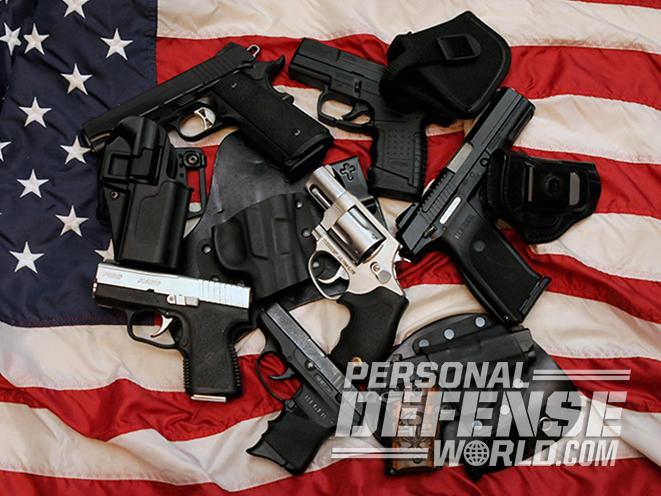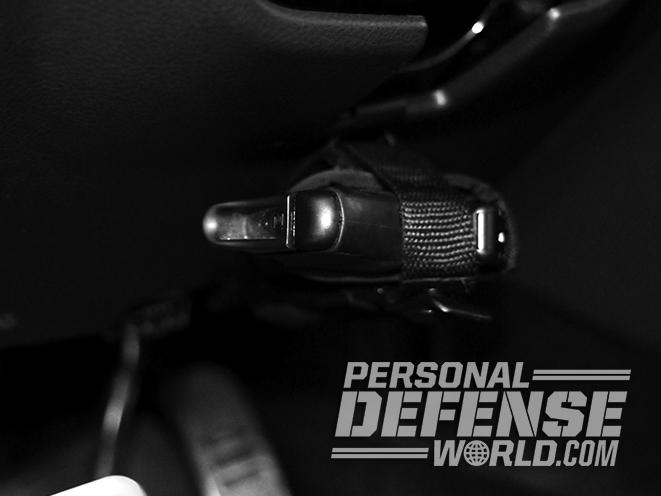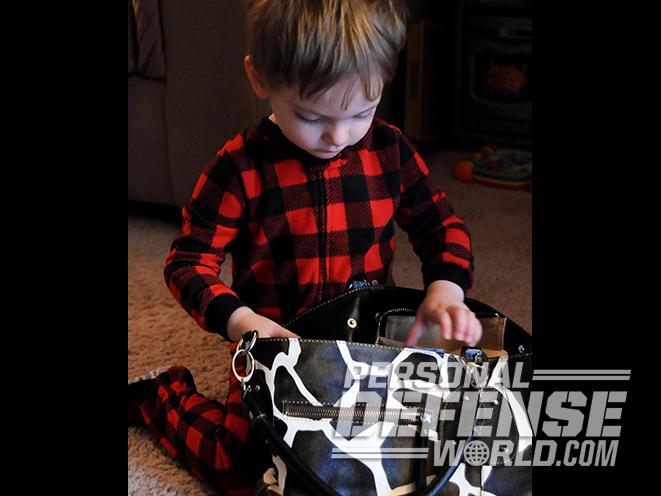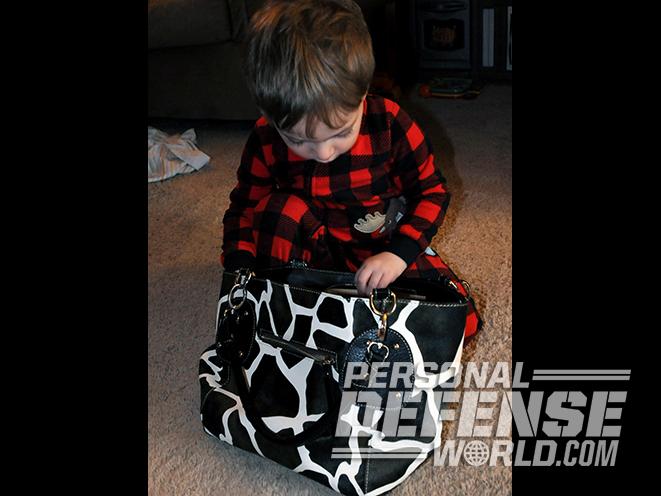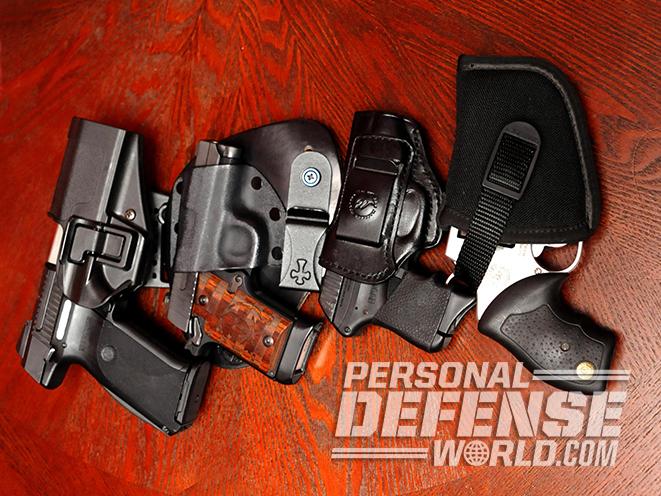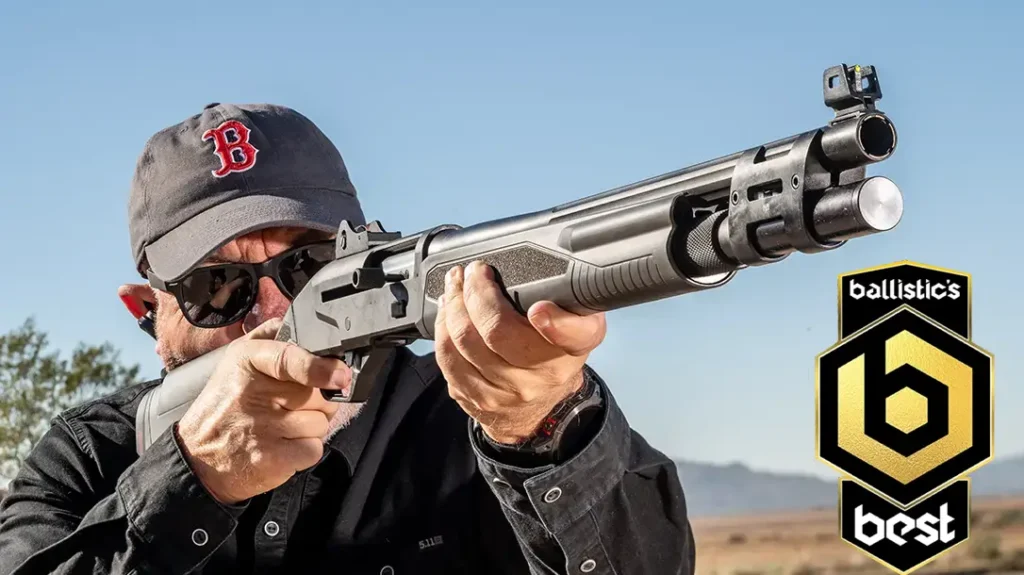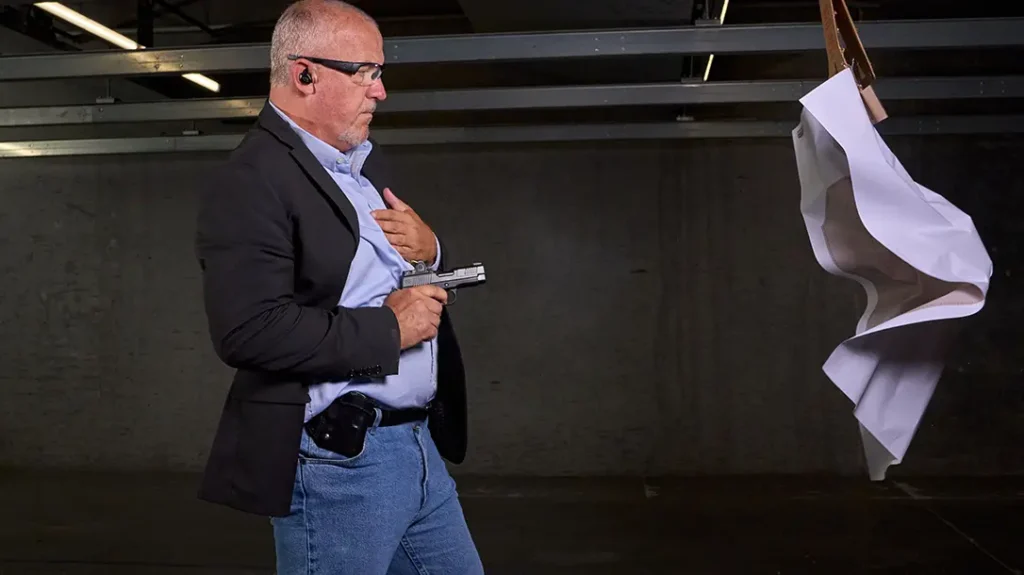With six years under my belt as an NRA firearms instructor and federally licensed gun dealer, I have been asked a lot of questions about how to carry a CCW. Carrying a gun is a huge responsibility—so much so that I have even seen a lot of people choose not to carry a pistol or even obtain the permit. They may be nervous of what to expect, how people will look at them, someone else seeing your handgun and feeling threatened (brandishing), comfort, safety or even having to use their pistol in self-defense.
When you carry a CCW, you suddenly become more aware of your surroundings, your senses operate a little bit higher, you notice signs on doors, some people become sensitive to how others are looking at them, you have to plan your days better and you may even have to start dressing a little differently. Carrying a gun will be a different and unique experience for every individual. Everyone has a reason for carrying a gun, but ultimately, as American citizens, we have the right to bear arms and defend ourselves and our families. Now let’s take a look at some of the basic concerns that a first-time concealed carrier may have on his or her first day.
Choosing Your CCW
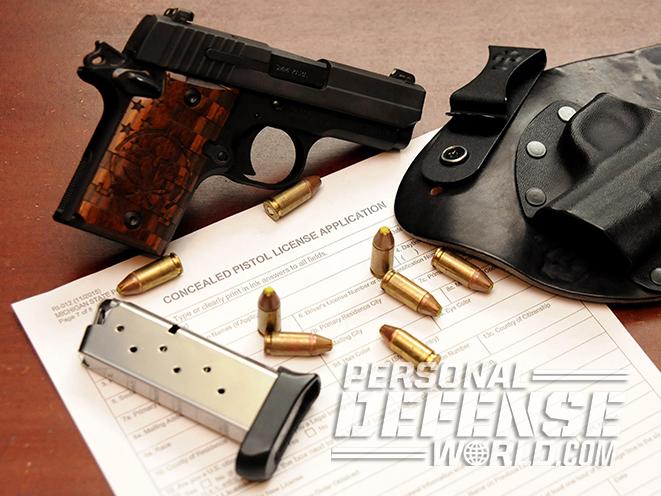
It all starts with your firearm. Your firearm is the most important part of your carrying experience. There are a few things you always want to keep in mind when choosing the gun that could one day save your life. You want to choose a firearm that is comfortable for you. That firearm should be one that, during training, you should be able to put rounds on target quickly and accurately.
Advertisement — Continue Reading Below
You want to make sure that your gun and ammo function reliably. This is going to ease your mind those first few days of carrying concealed. A gun that has malfunctions at the range is probably not a great choice in a defensive encounter. If you don’t have confidence in your firearm, you will never be comfortable carrying that firearm. Don’t let the big guy at the gun shop talk you into buying a 1911 in .45 ACP if you can’t handle more than a .380 ACP, or your hands are too small to work the safety.
- RELATED STORY: 14 Excellent Everyday Carry Handguns to Back You Up
I had this sweet older woman come to my class with her brand-new, snub-nose Smith & Wesson .357 Magnum revolver one time. The price tag was still hanging from the triggerguard. We got to the range, and she didn’t have the hand strength to even pull the 13-pound trigger. However, the guy at the gun shop told her it was the best gun for her. This is why you must always do your own research on your carry gun.
If you plan on carrying every day, you may need to pick multiple guns so you can remain armed in any situation. I personally have three carry guns that match various types of clothing and situations. Your gun needs to be easy to conceal while still being easy and quick to draw.
Advertisement — Continue Reading Below
How To Carry a CCW
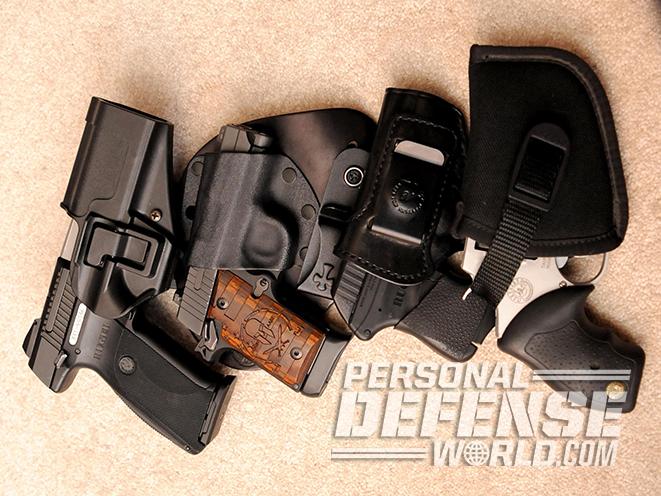
Now how do you carry the gun? This is all about comfort. If you are not physically comfortable, you will definitely not be mentally comfortable. There are hundreds of different kinds of holsters on the market. Which holster is going to work best for your situations? You will probably need multiple holsters. You could carry your gun in an outside-the-waistband (OWB), inside-the-waistband (IWB), ankle, bra, shoulder, purse or compression shirt holster. They even make yoga pants with built-in holsters now. The holster you choose is unique to your specific needs.
Ninety percent of the time I carry inside my waistband. I find these types of holsters to be very comfortable once they break in. I used to wear a dress shirt tucked into my pants, and with the proper IWB holster, I walked around all day without anyone ever knowing I had a gun on my hip.
When you choose your holster, you need to think about your draw from that holster. How fast can you pull your gun out without snagging on clothing? This choice is as crucial as the gun itself. Your gun does you no good if you cannot get it out of the holster quickly.
Advertisement — Continue Reading Below
Some of these holster options sound like great ideas but are not the best options. Purse and briefcase holsters always come up in this conversation. I personally think purse or bag carry is a terrible idea because the gun is not secured to your person. When the guy snatches your purse at the mall, he now also has your gun. It is also not a very fast way to draw a weapon—if you’re fishing around the bottom of your bag trying to find your gun, you are losing valuable time. Remember, it is your responsibility to know where your gun is at all times. You could forget it in a bag, and someone who is not supposed to have it might be able to get their hands on it.
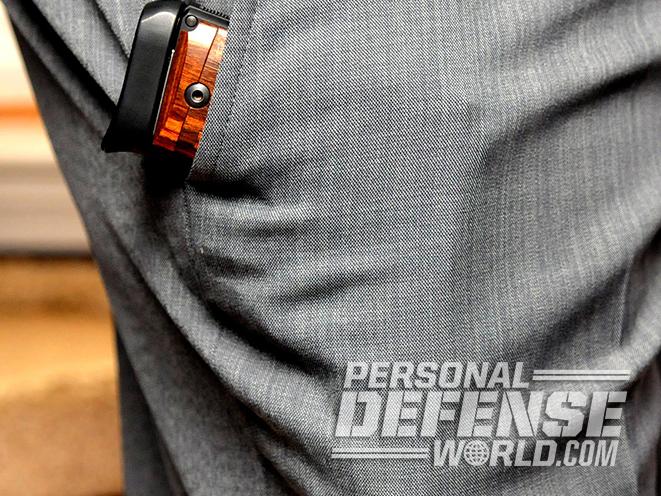
Depending on your holster, you may find yourself purchasing a new wardrobe as well. I purchase my pants at least one size up from what I need so that I can accommodate my gun and holster. I have also had a lot of issues with shirts. The funny shirts you buy at the mall might be perfect for getting a good laugh, but they tend to shrink and be very thin. You don’t want to reveal your firearm while you’re reaching for a gallon of milk at the grocery store. “Printing” is when your gun’s outline shows through your clothing. It’s a form of brandishing, and if anyone feels threatened, which doesn’t take much these days, you could find yourself in some trouble. Your choice of attire is very important to prevent printing. That’s why you should look at yourself in the mirror before you leave your home to see if you can see the handgun through your clothing. Chances are good that if you can see it, someone else can as well. However, most people don’t really pay attention unless it is very obvious. Ask your significant other if your gun is visible. If they say no, check for yourself in a mirror to ease your mind and go about your day.
Adjusting for comfort or accessibility is normal. The first time you carry, you are going to feel like the gun is moving all over, and you won’t be sure when to adjust it to make it comfortable. Obviously, the goal is to not draw attention to yourself or your gun. Just find some place away from everyone and do all the adjusting you need. As time goes on, you will become more and more comfortable when carrying a gun. Moreover, you will probably begin feeling uncomfortable if you are not carrying!
Advertisement — Continue Reading Below
Ready To React
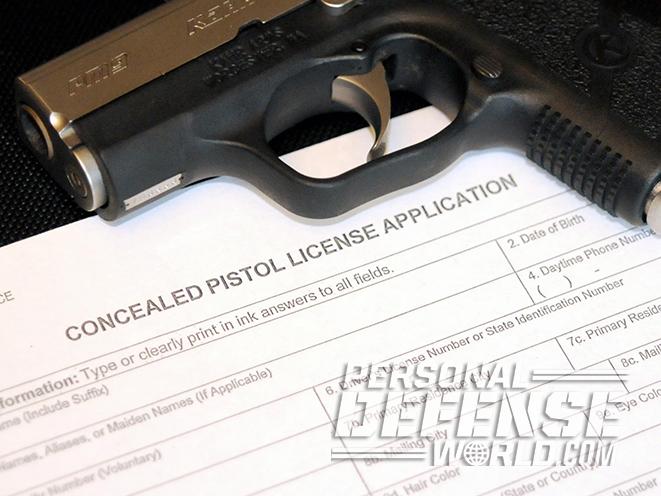
Another question I get all the time is “Should I carry my gun with a round in the chamber?” I always say yes. A lot of people are very nervous about carrying their gun with a round chambered, especially if the gun doesn’t have an external safety. But the last thing you want to do is draw your gun and either forget there is no bullet in the chamber or fumble around trying to rack the slide. You have to remember that a gun will not go off without pulling the trigger. Make sure your holster covers the triggerguard and there’s nothing obstructing your gun as it’s reholstered. Of course, if you just don’t feel comfortable carrying with a round in the chamber, make sure you put in a lot of work training yourself to rack the slide every time you pull your pistol out of the holster. The same goes for external safeties. Practice makes perfect!
All of this preparation is ultimately to make sure you are prepared if you ever have to use your gun in self-defense. More than likely, you will never have to draw your gun in self-defense. You probably started carrying a gun because, in that completely off chance you need to use it, all the crime statistics in the world won’t matter, and you know the police are not going to get there in time. I always compare carrying a gun to wearing your seatbelt—you don’t get in your vehicle and know you’re going to get in a wreck, but you still put your seatbelt on every time.
The first time you leave your house with a CCW, a whole wave of emotions and feelings will come over you throughout the day. You will begin seeing people differently and noticing the situations around you. You may notice you watch everyone around you or your loved ones, you may watch people’s hands a bit more, notice cover or concealment areas, or even sit facing the door at the restaurant now. Emotions will jump through you in different situations—happiness, fear, anxiety and self-consciousness, to name a few. All of these emotions and feelings are great things to have. The more aware you are, the less likely you are to become a victim. Carrying a gun is going to make you uncomfortable and kind of awkward, but it’ll make you feel very at ease and safe at the same time. Carrying a gun is a huge responsibility—one that will change your life.
Advertisement — Continue Reading Below
You must take the time to know the laws and understand the laws on guns and carrying one in your area. Make sure you have your concealed pistol license if required in your state. You also need to have a solid grasp of self-defense laws in your area. The more familiar you are with laws pertaining to the use of deadly force in self-defense, the less likely you’ll be to hesitate if you need to act in self-defense. Understanding the law will also serve as a reminder that your gun is not the solution to every problem you encounter.
Carrying a CCW doesn’t obligate you to take action even when you are a witness to a crime that would justify the use of deadly force. If you’re at the gas station while it is being robbed at gunpoint, you don’t have to act. Use your judgment. Remember that you’re not a police officer, and you don’t have to be a hero. Sometimes, your best response is to be the best witness you can be when the police arrive. Concealed carry is a lifestyle, and make sure you carry every day.
This article was originally published in ‘Concealed Carry Handguns’ Spring 2017. To subscribe, visit outdoorgroupstore.com.
Advertisement — Continue Reading Below
